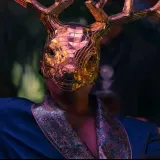Case File #015: The Greenbrier Ghost – Justice From Beyond the Grave
Status: Closed – Conviction Secured via Supernatural Testimony
Date Filed: January 1897
Last Reviewed: May 31, 2025
Location: Greenbrier County, West Virginia, USA
Subject: Zona Heaster Shue – Edward "Trout" Shue
Filed Under: Historical Crime – Paranormal Legal Precedent
Access Level: Public Archive – Historical Testimony Accepted in Court
Introduction: A Whisper from the Dead
In the winter of 1897, the small Appalachian town of Greenbrier, West Virginia, became the setting of one of the most bizarre legal cases in American history. It started with the death of a young woman—Elva Zona Heaster—and ended with her husband, Edward “Trout” Shue, convicted of her murder.
But what truly sets this case apart isn’t the crime itself.
It’s how it was solved.
Zona's mother claimed her daughter's ghost visited her night after night, detailing how she had been murdered. The visions were so vivid, so consistent, and so convincing that prosecutors used them to launch a murder investigation—and the jury believed it.
This wasn’t folklore.
This wasn’t legend.
This was a real murder case where a ghost’s testimony led to a conviction.
The Marriage and the Death
Elva Zona Heaster was a 23-year-old woman who met Edward “Trout” Shue, a blacksmith who had recently moved to Greenbrier. He was charming, tall, and charismatic. They married quickly—within weeks of meeting.
On January 23, 1897, only three months into their marriage, Shue sent a young boy to the couple’s home on an errand. The boy returned in terror:
Zona’s body was at the bottom of the stairs. Her eyes were wide open, arms crossed unnaturally, and she was already dead.
The town doctor, Dr. George Knapp, was summoned. When he arrived, Shue was cradling Zona’s body and had already dressed her—a highly unusual action at the time. He had wrapped her neck in a high, stiff collar and scarf, refusing to let the doctor examine her neck.
Shue claimed Zona had died from “everlasting faint”, a vague term used in the 1800s. The doctor, intimidated by Shue’s erratic behavior, signed the death certificate and left.
Zona was buried shortly after.
Case closed.
At least for the town.
But Zona’s mother, Mary Jane Heaster, wasn’t finished.
The Haunting Begins
Weeks after the funeral, Mary Jane Heaster began praying for a sign. She believed Shue had murdered her daughter, but had no proof—only mother’s intuition.
Then the dreams began.
Over four consecutive nights, Mary Jane claimed Zona’s spirit appeared at the foot of her bed, glowing, angry, and detailed. According to Mary Jane, Zona’s ghost said:
"He was cruel... he abused me… he broke my neck."
The ghost even described how he did it—by twisting her head violently, and that he had been abusive since the start of their marriage.
She told this to everyone who would listen, and eventually reached the local prosecutor, John Alfred Preston. To his credit, Preston was skeptical—but he listened. And then he looked into Shue’s past.
Edward Shue’s Dark History
Turns out, Edward Shue was hiding secrets:
- He had been married twice before.
- One wife divorced him for abuse.
- The other? Mysteriously died.
Shue had also bragged to townsfolk about wanting “seven wives.” Zona was wife number three.
With growing suspicion, Zona’s body was exhumed. A proper autopsy was conducted.
The result?
Her neck was broken.
Her windpipe was crushed, and ligaments torn. Just like the ghost had described.
The Trial: A Ghost on the Stand
Shue was arrested and charged with murder. During the trial, his defense tried to discredit Mary Jane Heaster by claiming she was insane, delusional, or hallucinating.
In response, Mary Jane testified under oath that Zona’s ghost visited her and described the murder. She never changed her story.
While the ghost's testimony wasn't considered hard evidence, it was what led to the investigation—and the jury knew that.
The defense objected, but the judge allowed the testimony, stating:
"Let the jury decide the credibility."
Shue himself made things worse by taking the stand and acting arrogant, saying no one could prove he did it. His behavior backfired.
On July 11, 1897, Edward Shue was found guilty of murder and sentenced to life in prison. He died three years later behind bars.
Legacy: The Only Ghost Witness in U.S. Legal History
To this day, The Greenbrier Ghost Case remains the only time in American legal history where a ghost's testimony was directly responsible for initiating a murder investigation, and heavily influenced the outcome.
Zona’s spirit never returned again.
Mary Jane Heaster lived to old age, never once denying the events.
A historical marker now stands near Zona’s grave in West Virginia. It reads:
“The only known case in which testimony from a ghost helped convict a murderer.”
Theories: Ghost or Grief?
Critics argue that Mary Jane was grieving and created the visions in her mind.
But… how did she know:
- The neck was broken?
- The details of the abuse?
- That Shue had prior dead wives?
Even without the ghost, Shue’s behavior, his history, and the injuries all lined up.
So the ghost didn’t fabricate the case—it forced the truth into the open.
Was it a spiritual visitation?
A psychic trauma bond?
Or just a mother who refused to stay silent?
Conclusion: Justice Beyond the Grave
The Greenbrier Ghost case asks one terrifying question:
What if the dead really can speak?
And worse—what if they’re our only witnesses?
Zona Heaster died violently.
Her spirit rose in protest.
And her killer was caught because she refused to stay buried.
References
All sources used in this case are listed in the References Archive. Each link corresponds to verified data, public records, or expert documentation.

